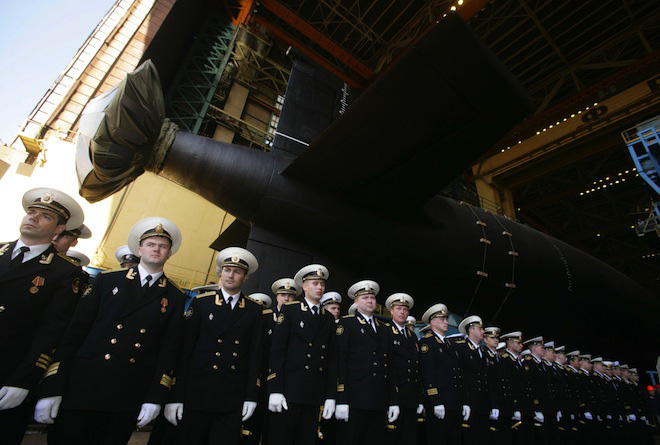If the state of Chinese and Russian undersea forces are any indication, the United States needn’t worry too much about the competitiveness of its own submarine fleet anytime soon.
Naval analyst and professor at the Massachusetts Institute of Technology Owen Cote, Jr., told The Diplomat‘s David Axe Monday that Russia’s submarine program is “on the ropes — a disaster by our (US) standards.”
Earlier this month, Moscow put to sea its first fourth-generation nuclear attack sub, the Severodvinsk. It is currently undergoing active trials, but the project has taken nearly two decades to complete amid troubles over funding. The future doesn’t look much brighter from Moscow, either: over the next several years, Russia’s military plans to retire many of its aging undersea vessels, leaving around 20 subs operational. Washington currently fields three times as many.
Cote has also recently downplayed the undersea threat from Beijing. Although China is investing heavily in land- and surface-based capabilities, the country is considerably weaker when it comes to anti-submarine warfare. The People’s Liberation Navy, argued Cote in an MIT paper (pdf), isn’t equipped to detect undersea vessels very effectively, if at all.
The ASW capabilities it does have appear focused on coastal defense, and on the threat posed by the diesel submarines of potential regional adversaries as opposed to American SSNs.
Experts say China’s maritime defense rests on the so-called “string of pearls” (pdf) strategy, which aims to use various forward naval bases and commercial outposts to project power into the South China Sea — which Beijing claims it owns — and the Indian Ocean.






